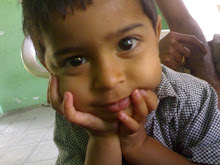
In Hindu mythology there are various forms of meditations and different paths for yogis but Shiva represents the art of meditation in its most absolute form. In meditation, not only mind is made still but everything is dropped. In deep meditation or Samadhi, even the object of the meditation (like a mantra, Tantra or Yantra) is transformed into its formless essence, which is the essence of absoluteness and "Purna"(completeness). Thus Shiva stands for letting go everything in the world of forms. The path of Lord Shiva is undoubtedly the path of the ascetic yogi.
It is believed that the God Shiva is the Destroyer or Transformer of living beings among the Trimurti. The Lord Shiva is regarded as the Most Powerful God In Hinduism. According to the tradition of Hinduism, Lord Shiva is the Supreme God of Hindu as he is the creator, preserver, destroyer, concealer, and revealer of human beings.
God Shiva is worshiped in the form of lingam. It is believed that he is living on Mount Kailash as an omniscient yogi with his wife Parvati and sons Ganesha and Kartikeya. He has benevolent as well as fearsome forms and often depicted as immersed in deep meditation, slaying demons in fierce aspects or as the Cosmic Dancer.
1) The ‘third eye’ represents how Meditation and Yoga allowed Shiva to refine his energies and enhance his perception of the world around him.
2) The Trishul represents the three fundamental dimensions of life. The left and right parts represent the basic duality in existence, the logical and intuitive sides of any person. The middle part, or ‘Sushumna’, represents the central dormant space. It is believed that life only begins when you are able to channel energies into the Sushusmna and attain a new inner peace which cannot be disturbed or influenced by outer situations.
3) Shiva’s weapon is the trident or Trishul, which signifies the forces of creation, preservation and destruction.
4) The snake represents the ‘Vishuddhi chakra’ located in the pit of the throat. It represents a filter to all kinds of poison entering the body. The live snake symbolizes the active state of his Vishuddhi, as snakes are very sensitive to certain energies and substances.
5) The moon on his forehead represents ‘soma’, which essentially means intoxication. Vedic scriptures describe how the brain is capable of being completely intoxicatedand still fully aware and awake. There are millions of receptors in our brain which will receive natural narcotics when certain practices of yoga and meditation are followed.
6) The Damru in his hands created the spiritual sound of ‘Om’ which is present in all living things and is a source of cosmic energy. Shiva uses it to channel his spiritual energy during his ‘Tandava’ cosmic dance.
7) Lord Shiva resides at the summit of the legendary Kailash Mountain, which is the abode of his family as well. He is believed to sit there in perpetual meditation with his wife Parvati who represents Shakti. The mountain is at the center of six mountain ranges and is believed to represent a lotus as well. It is the only mountain at the base of which both a fresh water and a salt water lake can be found together. The fresh water Mansarovar and the salt water Rakshas tal represent both the positive and negative energies in the world and that Lord Shiva has control over both of these, thus attaining balance.
8) God Shiva has his vehicle known as Nandi or Nandin which is bull and serves as Shiva’s mount. Because of the relation of Shiva with an animal he named as Pasupati or Pashupati or lord of cattle.The bull represents him a Dharma Devata as a protector of Dharma.
9) Lord Shiva has a big group of Gaṇa ro bhutagana who lives in Kailash with Shiva. It is considered that the Ganesha (son of Lord Shiva) was chosen the leader of all Gana by Shiva, so the Ganesha is also called gaṇapati or lord of the gaṇas.
10) Mount Kailash is exists on the Himalayas, the nagari of King Himalaya. Kailash resembles a Linga which is the traditional abode of God Shiva known as the the center of the universe. 11) God Shiva is also called as the Dakshinamurthy as he seat facing south (dakṣiṇa) which represents Shiva as a teacher of yoga, music, wisdom and a variety of shastras.
Shiva is 5 faced. His faces are Satyojatham, thathpurusham, eesaanam, vaamadevam and aghoram. It was from this five faces the five variable swarasri, ga, ma, dha and ni of carnatic music evolved. Lord Muruga, the son of Lord Shiva has 6 faces. 5 of his faces are created from Shiva’s five faces.
Five Syllable Mantra:
Na ma shivaaya – popularly called as panchAksharamantram. This is shiva’s mantra. This has five syllables as shown above.
Five Bhutas:
Shiva is said to be the embodiment of the five elements or panchabhuta. Sky(Akash), Wind(Vayu), Fire(Agni), Water(Jhalam), Land(Prithvi) are five in numbers. They are the five indriyas of Shiva. Sky is his ears, Wind is his body or skin, Fire is his eyes, Water is his tongue, Land is his nose. If we closely analyse these elements are associated with the 5 senses.
To co-memorate this we have the panchabhutasthala.
1. Akash – Chidambaram
2. Wind – Kaalahasti
3.Fire – Tiruvannamalai
4.Water – Tiruvaanaikka
5. Land – Kanchipuram

No comments:
Post a Comment